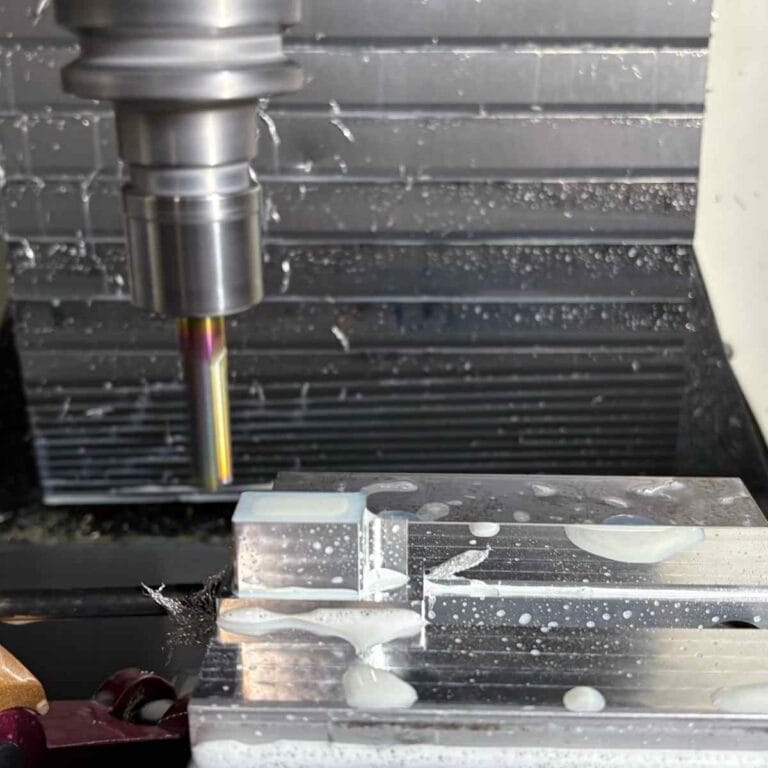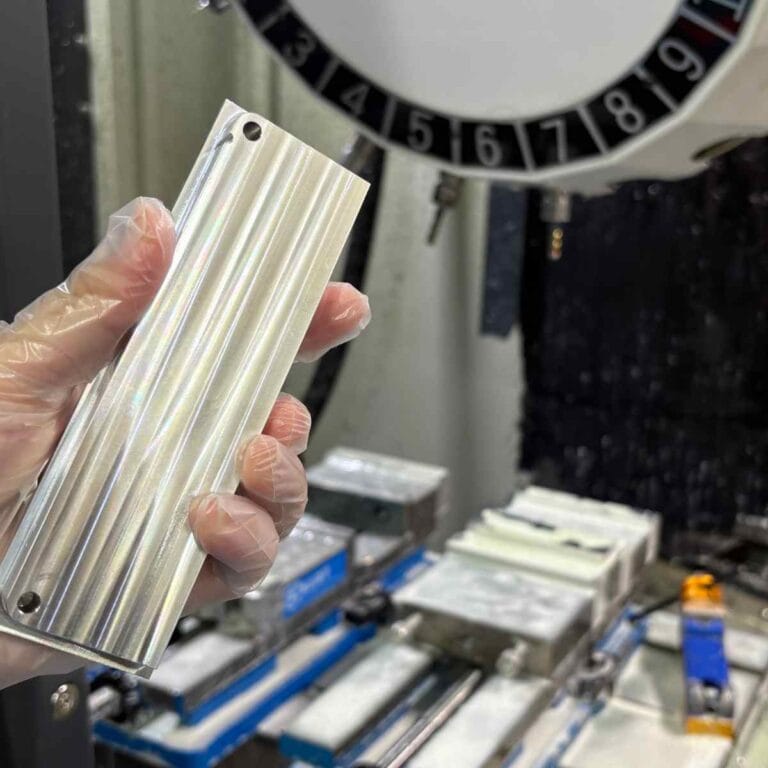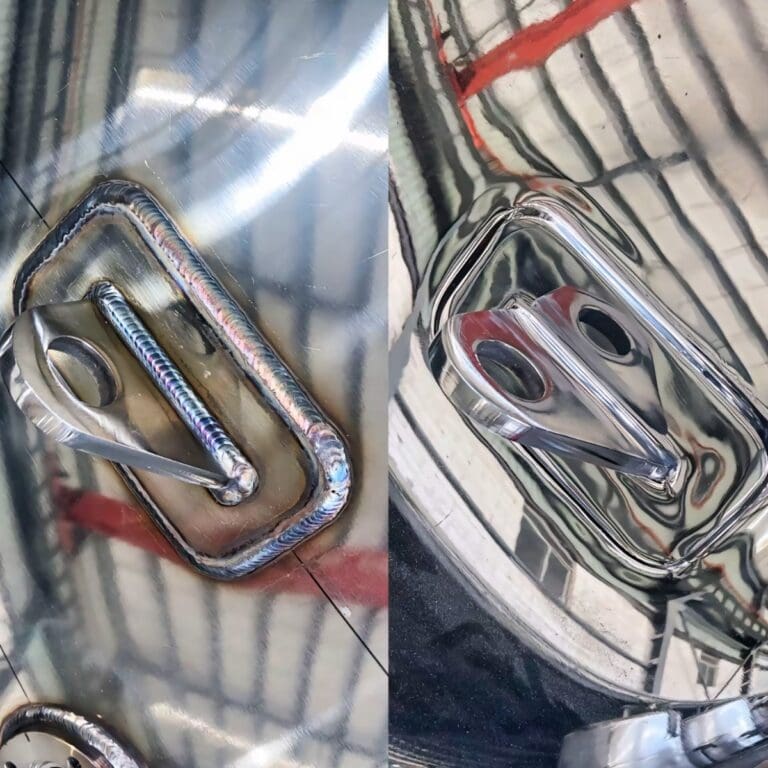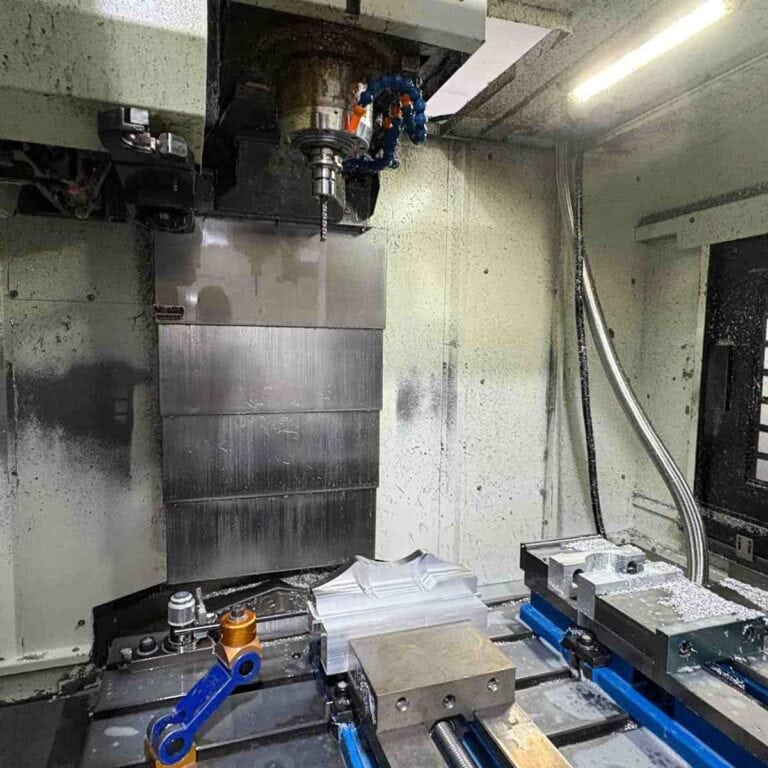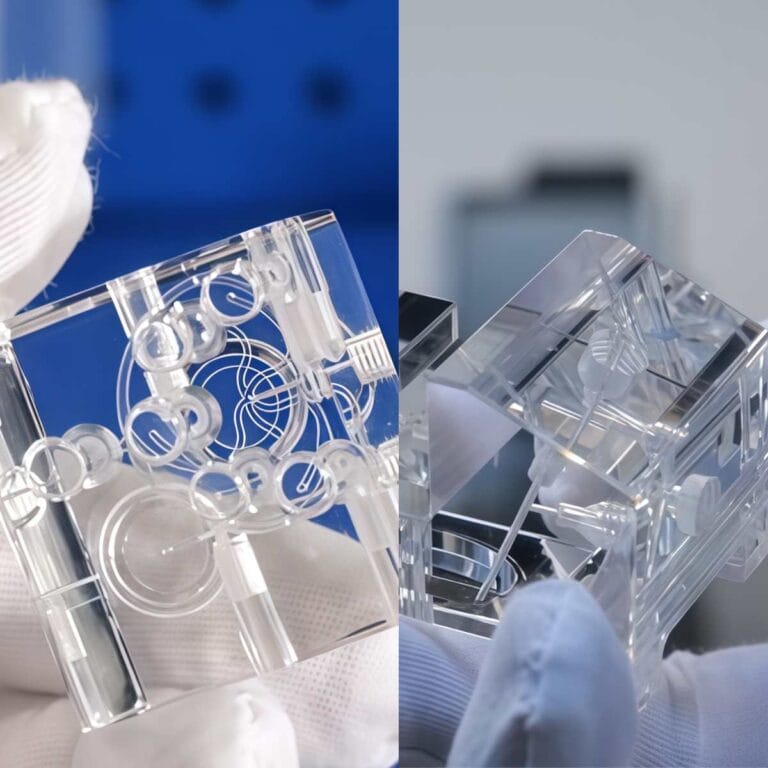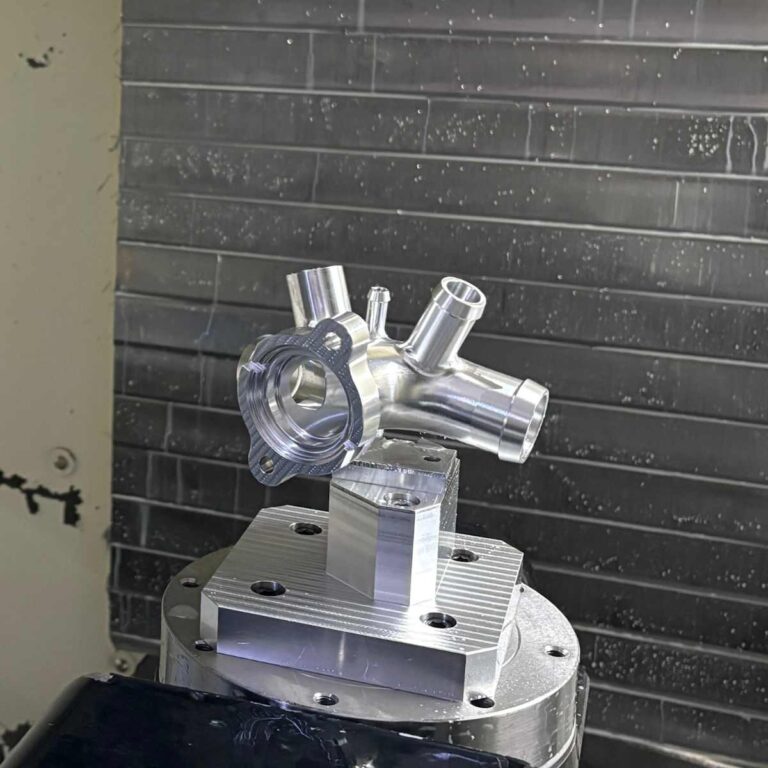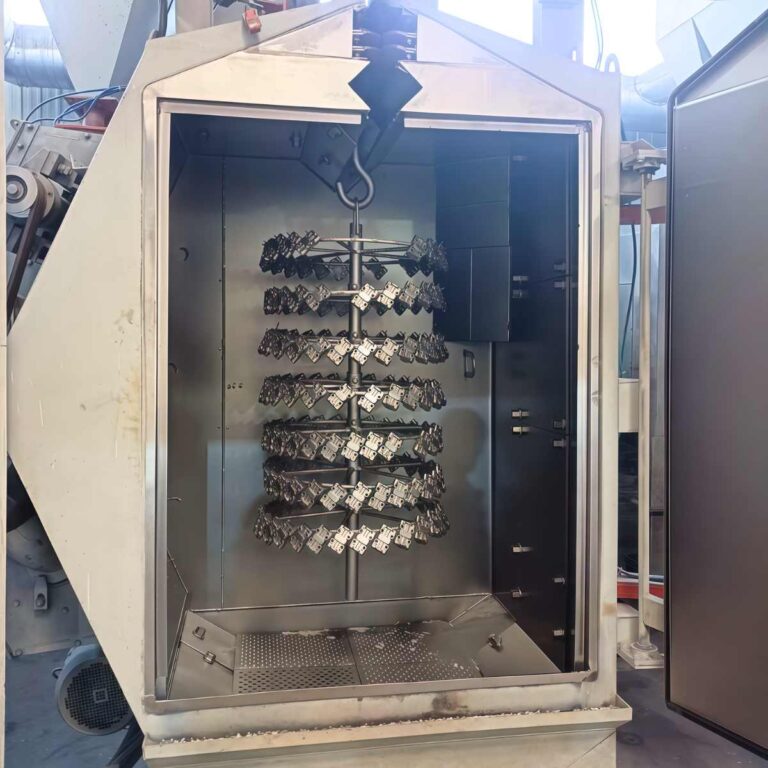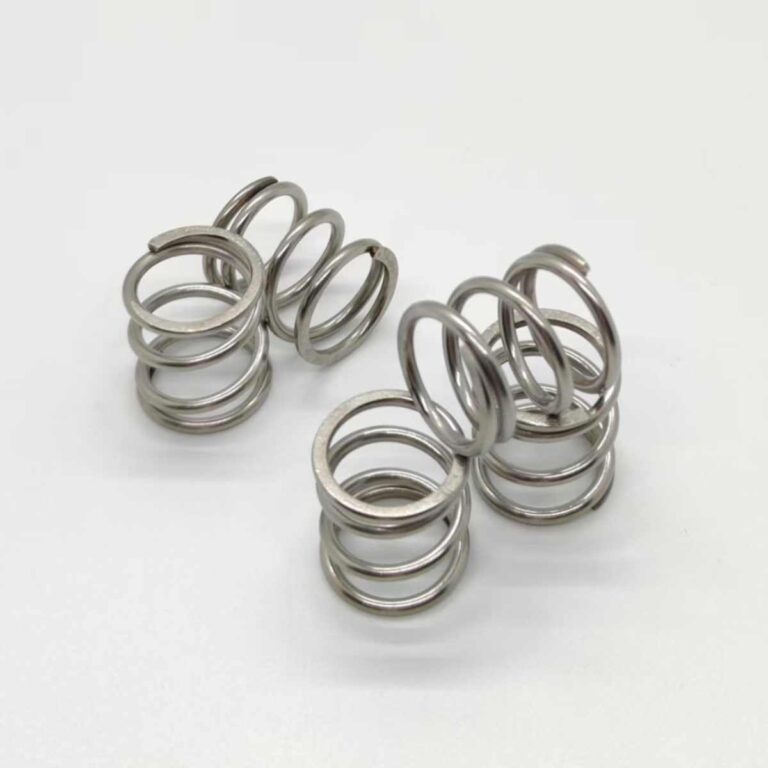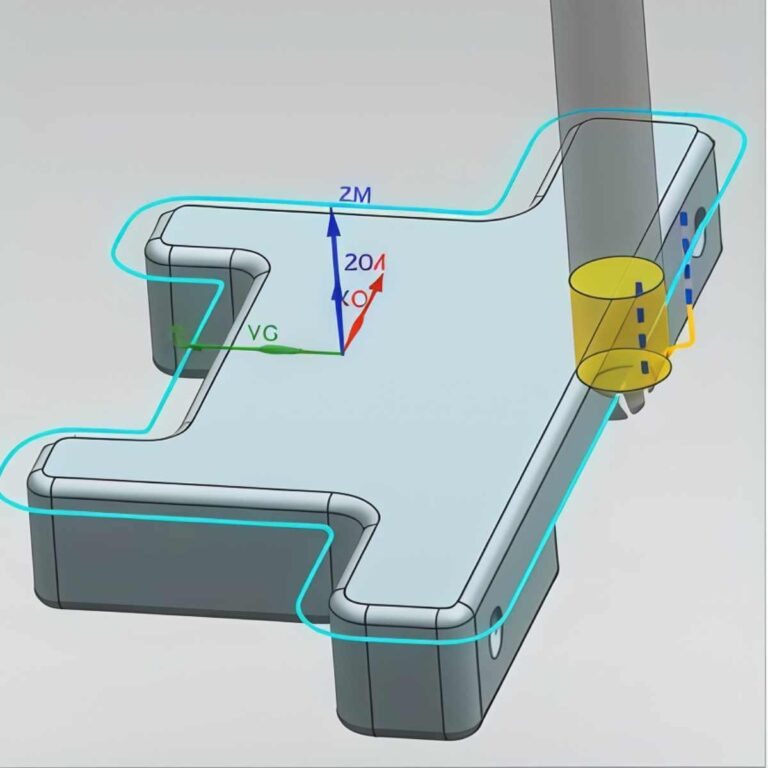Engineers often debate 6061 vs 7075 because both alloys are lightweight and strong, yet their differences strongly impact structure, safety, and cost. Although each offers a high strength-to-weight ratio, they vary greatly in composition, mechanical performance, manufacturability, price, and ideal applications. This guide highlights the key distinctions so you can quickly choose the right alloy for your project.
Get 20% offf
Your First Order
What Is 6061 Aluminum
6061 aluminum, a widely used Mg-Si alloy, offers strong machinability, stable mechanical strength, and reliable corrosion resistance for diverse applications.It is one of the most widely used aluminum grades for general-purpose structural and machined components.
Chemical Composition & Alloying Elements
Based on practical CNC machining experience, 6061 is part of the 6xxx aluminum series, characterized by a Mg-Si alloying system.
Magnesium (~1.0%): Provides strength enhancement and maintains good weldability.
Silicon (~0.6%): Combines with Mg to form Mg₂Si, improving hardness and machinability.
Low copper content: Ensures significantly better corrosion resistance compared with Cu-rich alloys such as 7075.
Overall, this composition delivers a balanced profile of strength, corrosion resistance, and processing performance.
Physical & Mechanical Properties
6061 is known for its reliable, all-around performance:
Yield strength ~276MPa: Suitable for medium loads
Density 2.7g/cm³: Offering excellent lightweight characteristics
Hardness ~95HB: Providing good machinability
High ductility: Allowing bending and forming without cracking
This combination is why 6061 is one of my top recommendations for CNC prototype and production parts.
Machinability, Welding, Anodizing & Corrosion Resistance
6061 is one of the easiest aluminum alloys to work with:
Excellent machinability: With clean cutting and smooth surface finish
Highly weldable: Especially with proper filler materials
Anodizes beautifully: Suitable for decorative and functional coatings
Strong corrosion resistance: Particularly in atmospheric and freshwater environments
This makes 6061 ideal for housings, brackets, mechanical frames, and visual parts requiring consistent finish.
Advantages, Limitations & Typical Use Cases
Advantages:
Offers one of the best price-to-performance ratios among aluminum alloys
Machines smoothly with minimal tool wear and supports reliable welding
Anodizes uniformly for both decorative and protective finishes
Lower copper content gives it noticeably better corrosion resistance than high-zinc alloys
Limitations:
Not as strong as 7075
Welded areas may lose strength in T6 condition
Not ideal for extreme-load or fatigue-critical parts
Typical Applications:
Consumer electronics housings
Automotive brackets and heat sinks
Bicycle frames and sports equipment
Non-critical aerospace structures
What Is 7075 Aluminum
7075 is a Zn-Mg-Cu (zinc-magnesium-copper) aluminum alloy known for exceptionally high strength—making it a top choice for aerospace, defense, and high-performance engineering.
Chemical Composition & Alloying Elements
7075 is a 7xxx-series alloy dominated by zinc, with magnesium, copper, and chromium added for reinforcement.
~5.6% Zinc — Major contributor to its steel-like strength
2.1–2.9% Magnesium — Forms MgZn₂ strengthening phases
1.2–2.0% Copper — Increases hardness but reduces corrosion resistance
~0.2% Chromium — Prevents cracking and stabilizes the alloy
In many aerospace projects I’ve worked on, clients choose 7075-T6 specifically because this composition provides unmatched strength stability under extreme loads.
Physical & Mechanical Properties Overview
7075 delivers some of the highest physical and mechanical performance among aluminum alloys:
Yield Strength: 503 MPa — nearly twice that of 6061
Hardness: 150 HB — excellent wear resistance
Elastic Modulus: 71.7 GPa — exceptional stiffness
High fatigue resistance — ideal for repetitive-load environments
Density: 2.81 g/cm³ — slightly higher than pure aluminum, still much lighter than steel
For drone arms, aerospace brackets, and racing components, 7075 is often the default material.
Machinability, Formability & Heat-Treatment Behavior
While 7075 is extremely strong, it is also more challenging to work with:
Machinability: Fair
High hardness increases tool wear; carbide tools and conservative feeds are necessary.
Formability: Poor
Not suitable for deep drawing or tight bends.
Weldability: Very Poor
High zinc content causes hot cracking; welding is generally avoided.
Heat Treatment: Excellent
Tempers like T6 and T651 greatly enhance strength and are widely used in aerospace.
In many of my engineering projects, choosing 7075 requires balancing strength needs with manufacturing difficulty.
Strengths, Limitations & Typical Applications
Advantages:
Among the strongest aluminum alloys
Excellent strength-to-weight ratio
High fatigue resistance
Superior rigidity
Limitations:
Poor weldability
Moderate corrosion resistance
Higher machining difficulty and cost
Common Applications:
Aerospace (wing fittings, landing-gear parts)
Defense (weapon components, missile structures)
High-performance sports equipment (bikes, racing parts)
Heavy-load mechanical components (molds, gears, shafts)
Key Differences Between 6061 And 7075 Aluminum
The key distinction is strength vs. workability: 7075 delivers almost double the strength of 6061 but is harder to machine, unweldable, and more costly.Engineering material selection often requires striking a balance between “strength requirements” and “manufacturability”.

Alloy Series & Chemical Composition Comparison
| Alloy | Alloy Series | Primary Alloying Elements | Key Characteristics |
| 6061 Aluminum | Mg-Si series (6xxx) | Magnesium (Mg), Silicon (Si) | Balanced strength, excellent corrosion resistance, good weldability |
| 7075 Aluminum | Zn-Mg-Cu series (7xxx) | Zinc (Zn), Magnesium (Mg), Copper (Cu) | Very high strength, slightly weaker corrosion resistance, limited weldability |
Physical Properties & Density Comparison
| Property / Item | 6061 Aluminum Alloy | 7075 Aluminum Alloy |
| Density (g/cm³) | 2.70 | 2.81 |
| Strength-to-Weight Ratio | Moderate, suitable for general structures | Very high, aerospace-grade |
| Hardness (HB) | 95 | 150 |
| Elastic Modulus (GPa) | 68.9 | 71.7 |
| Thermal Conductivity (W/m·K) | 167 | 130 |
| Melting Point Range (°C) | 582–652 | 477–635 |
| Anodizing Appearance | Excellent, uniform finish | Acceptable but may yellow due to high zinc content |
6061 vs 7075 Fatigue Life Comparison
Fatigue Life
7075 exhibits a significantly longer fatigue life, especially in the T6/T651 temper, due to its much higher tensile and yield strength. It performs better under high-stress, high-cycle loading.
6061 offers moderate fatigue life, suitable for general structures and moderate stresses but not ideal for extreme cyclic loads.
Wear Resistance
7075 has a higher Brinell hardness (~150 vs. 95 for 6061), making it more resistant to wear.
It is preferred for high-friction, high-speed moving parts such as gears, shafts, and mechanical joints.
Corrosion Resistance
6061 offers stronger corrosion resistance thanks to its lower copper content, which helps form a stable and protective oxide layer.
7075, with higher copper levels, is more susceptible to pitting—especially in marine, humid, or chemically aggressive environments.
Selection Guide
Choose 7075 for superior fatigue strength, wear resistance, and high-stress structural components.
Choose 6061 for marine exposure, outdoor structures, and applications requiring better corrosion resistance.
Machinability Comparison
| Item | 6061 Aluminum Alloy | 7075 Aluminum Alloy |
| Formability | Excellent formability; suitable for stamping, bending, extrusion | Poor formability due to high strength and hardness |
| Bendability | Supports small to medium bending radii with low crack risk | Poor bendability; small-radius bending easily causes cracking |
| Deep Drawability | Good; suitable for medium-complexity housings and shells | Weak deep-drawing ability; generally not recommended |
| Weldability | Very weldable; T6 temper requires post-weld heat treatment | Poor weldability; highly prone to hot cracking and strength loss |
| Hot-Cracking Sensitivity | Low risk; stable under welding | High risk; one of the most crack-sensitive aluminum alloys |
| Overall Machinability Difficulty | Low difficulty; suitable for most CNC machining jobs | High difficulty; faster tool wear and requires rigid setups |
Cost Differences
Material Price Differences
7075 is typically 25–50% more expensive than 6061, especially in aerospace-grade T6/T651 tempers.
6061 is widely available and easy to source, making it more economical for prototypes and general-purpose production.
Many customers I work with switch from 7075 to 6061 during early prototyping to keep development costs under control.
Machining Cost Differences
7075 aluminum increases machining difficulty due to its hardness, resulting in:
Longer CNC cycle time
Higher tool wear
10–30% higher machining cost
6061 offers excellent machinability, allowing faster cutting speeds and lower tool consumption.
In typical CNC machining quotes, 7075 components cost at least 20% more than equivalent 6061 parts.
Lifecycle Cost Differences (LCC)
Long-term cost considers durability and maintenance, not just raw material price:
7075
Higher strength → lower risk of structural failure
Superior fatigue resistance → fewer replacements
Best for critical load-bearing components
Higher upfront cost but lower long-term risk cost
6061
Better corrosion resistance → suitable for outdoor or marine use
Excellent weldability → lower manufacturing & repair cost
More economical for general structural components
Simple rule: 7075 costs more upfront but may save money long-term; 6061 is cheaper initially but has lower performance ceiling.
How To Choose The Right Aluminum Alloy For Your Project
Choosing between 6061 and 7075 aluminum is a frequent material selection challenge encountered in engineering projects.Both alloys offer high strength-to-weight ratios and excellent machinability, but their performance varies widely across different applications. To avoid costly redesigns or machining failures, you must evaluate your project based on load, stiffness, environment, manufacturability, and budget.
Key Decision Factors
Load Requirement
High stress, impact, dynamic load → Choose 7075
Medium strength structural parts → 6061 is sufficient
Stiffness
7075 has slightly higher modulus
6061 still meets most applications
Environment
Corrosive / marine / humid → 6061 performs better
Dry, high-load → 7075 is more efficient
Manufacturing Process
Requires heavy welding → 6061
High-precision CNC, no welding → 7075 acceptable
Deep drawing or bending → 6061 preferred
Cost
Raw material price: 7075 is 20–40% higher
CNC machining cost: 7075 wears tools faster
Budget-sensitive projects → 6061
Selection Workflow By Application Type
Structural Parts
High strength or fatigue → 7075
Welded structures → 6061
High vibration → 7075
Example:
A racing client chose 7075 for a suspension arm, reducing weight by 9% and increasing strength by nearly 30%.
Cosmetic Parts
Better anodizing quality → 6061
Better surface finish → 6061
Example:
For premium electronic housings, 6061 produces cleaner anodized color and uniform texture.
Precision Parts
Highest stability → 7075
Heat dissipation → 6061
High wear or load → 7075
6061 vs 7075 Comparison Decision Table
| Category | 6061 Aluminum | 7075 Aluminum |
| Strength | Medium | Very High (≈2× of 6061) |
| Weldability | Excellent | Poor |
| Machinability | Easy | Moderate to Difficult |
| Anodizing | Excellent | Good (color variation possible) |
| Corrosion Resistance | Better | Moderate |
| Cost | Low | High |
| Best For | Housings, frames, general structures | Aerospace parts, high-load components |
FAQs
When Can 6061 Replace 7075?
In many projects, I can confidently replace 7075 with 6061 when extreme strength is not the primary requirement.If your design requires excellent weldability, strong corrosion resistance, and smooth machining performance, 6061 is the more suitable alloy.For general structural components, housings, brackets, or applications below 250–300 MPa load, 6061 delivers stable performance at 30–40% lower material cost.
6061 vs 7075 Which Alloy Is Better For CNC Machining?
For the majority of CNC machining operations, 6061 is the optimal choice due to its high machinability, reduced tool wear, and superior dimensional stability during cutting. Its Brinell hardness of 95 ensures smooth cutting compared to 150 for 7075. However, for high-load aerospace parts, 7075 is better despite higher machining difficulty. In general CNC workflows, 6061 reduces machining cost by 15–25%.
How To Estimate The Cost Difference Between 6061 And 7075?
To estimate cost, I evaluate three components: material price, machining time, and finishing complexity. Typically, 7075 is 20–35% more expensive in raw material and increases machining cost by 10–20% due to tool wear and slower feed rates. If heat treatment or special coatings are required, total project cost may rise another 10%. For most projects, 6061 is the more economical option.
Why Can’t You Weld 7075 Aluminum Alloy?
7075 aluminum has a high zinc and copper content, making it highly susceptible to hot cracking when subjected to welding heat.When I apply heat, the alloy’s microstructure becomes unstable, leading to porosity and significant strength loss—often more than 40–60% reduction in the heat-affected zone. Even with post-weld heat treatment, restoring full strength is nearly impossible. For safety-critical parts, welding 7075 is never recommended.
What Factors Need To Be Considered When Choosing 6061 And 7075 Aluminum Materials?
When selecting between 6061 and 7075, I evaluate five factors: required strength, machining complexity, joining method, corrosion environment, and budget. If the project demands >500 MPa strength, 7075 is essential. If weldability, corrosion resistance, or cost efficiency are priorities, I choose 6061. I also consider availability—6061 has wider stock options and shorter lead times.
Conclusion
Engineering material selection is never about “which is stronger,” but rather “which is more suitable.” If your project prioritizes extreme strength, rigidity, or fatigue life, choose 7075. If you require good machinability, corrosion resistance, weldability, and lower cost, choose 6061. Hopefully, this guide will help you quickly decide between 6061 and 7075 and make a more efficient and reliable material choice for your project. What are your processing requirements for 6061 and 7075? Tell us, and we will provide you with the most suitable solution!

